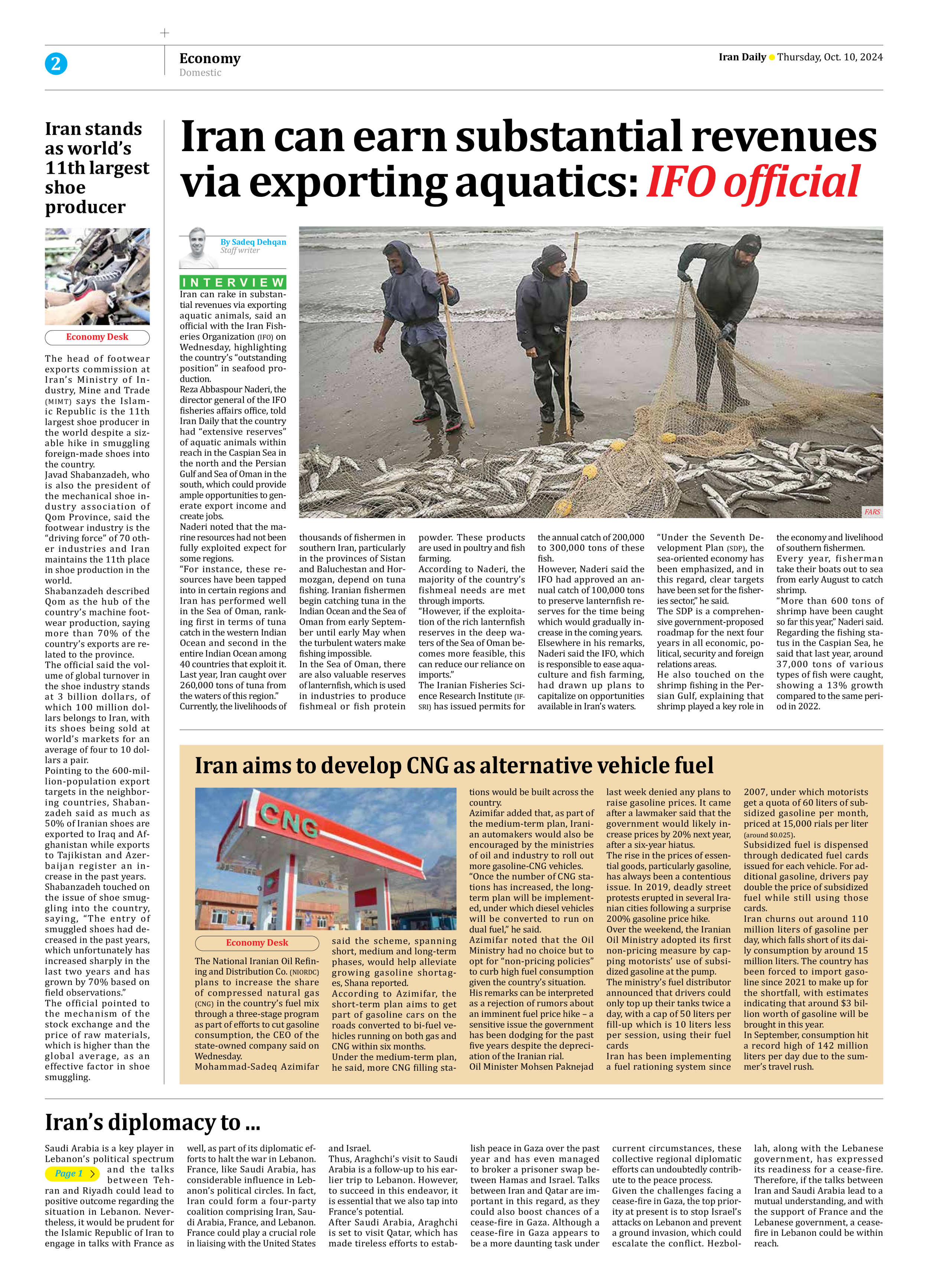
Iran can earn substantial revenues via exporting aquatics: IFO official
By Sadeq Dehqan
Staff writer
Iran can rake in substantial revenues via exporting aquatic animals, said an official with the Iran Fisheries Organization (IFO) on Wednesday, highlighting the country’s “outstanding position” in seafood production.
Reza Abbaspour Naderi, the director general of the IFO fisheries affairs office, told Iran Daily that the country had “extensive reserves” of aquatic animals within reach in the Caspian Sea in the north and the Persian Gulf and Sea of Oman in the south, which could provide ample opportunities to generate export income and create jobs.
Naderi noted that the marine resources had not been fully exploited expect for some regions.
“For instance, these resources have been tapped into in certain regions and Iran has performed well in the Sea of Oman, ranking first in terms of tuna catch in the western Indian Ocean and second in the entire Indian Ocean among 40 countries that exploit it. Last year, Iran caught over 260,000 tons of tuna from the waters of this region.”
Currently, the livelihoods of thousands of fishermen in southern Iran, particularly in the provinces of Sistan and Baluchestan and Hormozgan, depend on tuna fishing. Iranian fishermen begin catching tuna in the Indian Ocean and the Sea of Oman from early September until early May when the turbulent waters make fishing impossible.
In the Sea of Oman, there are also valuable reserves of lanternfish, which is used in industries to produce fishmeal or fish protein powder. These products are used in poultry and fish farming.
According to Naderi, the majority of the country’s fishmeal needs are met through imports.
“However, if the exploitation of the rich lanternfish reserves in the deep waters of the Sea of Oman becomes more feasible, this can reduce our reliance on imports.”
The Iranian Fisheries Science Research Institute (IFSRI) has issued permits for the annual catch of 200,000 to 300,000 tons of these fish.
However, Naderi said the IFO had approved an annual catch of 100,000 tons to preserve lanternfish reserves for the time being which would gradually increase in the coming years.
Elsewhere in his remarks, Naderi said the IFO, which is responsible to ease aquaculture and fish farming, had drawn up plans to capitalize on opportunities available in Iran’s waters.
“Under the Seventh Development Plan (SDP), the sea-oriented economy has been emphasized, and in this regard, clear targets have been set for the fisheries sector,” he said.
The SDP is a comprehensive government-proposed roadmap for the next four years in all economic, political, security and foreign relations areas.
He also touched on the shrimp fishing in the Persian Gulf, explaining that shrimp played a key role in the economy and livelihood of southern fishermen.
Every year, fisherman take their boats out to sea from early August to catch shrimp.
“More than 600 tons of shrimp have been caught so far this year,” Naderi said.
Regarding the fishing status in the Caspian Sea, he said that last year, around 37,000 tons of various types of fish were caught, showing a 13% growth compared to the same period in 2022.







